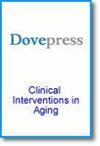利用 LASSO 回归法绘制急性缺血性脑卒中患者院内死亡率预测提名图
IF 3.7
3区 医学
引用次数: 0
摘要
背景和目的:缺血性卒中是全球致死和致残的主要原因,因此需要准确预测院内死亡率(IHM)以改善患者护理。本研究旨在为缺血性中风患者的个性化院内死亡率风险预测开发一个实用的提名图:方法:对重庆医科大学附属第一医院的422例缺血性脑卒中患者(2020年4月-2021年12月)进行回顾性研究,将患者分为训练组(n=295)和验证组(n=127)。收集了人口统计学、合并症、卒中危险因素和实验室结果等数据。中风严重程度使用 NIHSS 评估,中风类型根据 TOAST 标准分类。采用最小绝对收缩和选择算子(LASSO)回归法进行预测因子选择和构建提名图,并通过 ROC 曲线、校准曲线和决策曲线分析进行评估:结果:LASSO 回归和多变量逻辑回归确定了四个独立的 IHM 预测因子:年龄、入院 NIHSS 评分、慢性阻塞性肺病(COPD)诊断和白细胞计数(WBC)。基于这些变量的高精度提名图显示出卓越的预测性能,AUC 分别为 0.958(训练)和 0.962(验证),灵敏度分别为 93.2% 和 95.7%,特异度分别为 93.1% 和 90.9%。校准曲线和决策曲线分析验证了其临床适用性:结论:年龄、入院 NIHSS 评分、慢性阻塞性肺病病史和白细胞被确定为缺血性卒中患者独立的 IHM 预测因子。结论:年龄、入院 NIHSS 评分、慢性阻塞性肺病病史和白细胞被确定为缺血性卒中患者独立的 IHM 预测因子。为进一步证实其临床疗效,需要进行外部验证和前瞻性研究。 关键词:缺血性卒中、提名图、预测因子、拉索、院内死亡率本文章由计算机程序翻译,如有差异,请以英文原文为准。
Development of a Predictive Nomogram for Intra-Hospital Mortality in Acute Ischemic Stroke Patients Using LASSO Regression
Background and Purpose: Ischemic stroke is a leading cause of mortality and disability globally, necessitating accurate prediction of intra-hospital mortality (IHM) for improved patient care. This study aimed to develop a practical nomogram for personalized IHM risk prediction in ischemic stroke patients.
Methods: A retrospective study of 422 ischemic stroke patients (April 2020 - December 2021) from Chongqing Medical University’s First Affiliated Hospital was conducted, with patients divided into training (n=295) and validation (n=127) groups. Data on demographics, comorbidities, stroke risk factors, and lab results were collected. Stroke severity was assessed using NIHSS, and stroke types were classified by TOAST criteria. Least absolute shrinkage and selection operator (LASSO) regression was employed for predictor selection and nomogram construction, with evaluation through ROC curves, calibration curves, and decision curve analysis.
Results: LASSO regression and multivariate logistic regression identified four independent IHM predictors: age, admission NIHSS score, chronic obstructive pulmonary disease (COPD) diagnosis, and white blood cell count (WBC). A highly accurate nomogram based on these variables exhibited excellent predictive performance, with AUCs of 0.958 (training) and 0.962 (validation), sensitivities of 93.2% and 95.7%, and specificities of 93.1% and 90.9%, respectively. Calibration curves and decision curve analysis validated its clinical applicability.
Conclusion: Age, admission NIHSS score, COPD history, and WBC were identified as independent IHM predictors in ischemic stroke patients. The developed nomogram demonstrated high predictive accuracy and practical utility for mortality risk estimation. External validation and prospective studies are warranted for further confirmation of its clinical efficacy.
Keywords: ischemic stroke, nomogram, predictors, lasso, intra-hospital mortality
Methods: A retrospective study of 422 ischemic stroke patients (April 2020 - December 2021) from Chongqing Medical University’s First Affiliated Hospital was conducted, with patients divided into training (n=295) and validation (n=127) groups. Data on demographics, comorbidities, stroke risk factors, and lab results were collected. Stroke severity was assessed using NIHSS, and stroke types were classified by TOAST criteria. Least absolute shrinkage and selection operator (LASSO) regression was employed for predictor selection and nomogram construction, with evaluation through ROC curves, calibration curves, and decision curve analysis.
Results: LASSO regression and multivariate logistic regression identified four independent IHM predictors: age, admission NIHSS score, chronic obstructive pulmonary disease (COPD) diagnosis, and white blood cell count (WBC). A highly accurate nomogram based on these variables exhibited excellent predictive performance, with AUCs of 0.958 (training) and 0.962 (validation), sensitivities of 93.2% and 95.7%, and specificities of 93.1% and 90.9%, respectively. Calibration curves and decision curve analysis validated its clinical applicability.
Conclusion: Age, admission NIHSS score, COPD history, and WBC were identified as independent IHM predictors in ischemic stroke patients. The developed nomogram demonstrated high predictive accuracy and practical utility for mortality risk estimation. External validation and prospective studies are warranted for further confirmation of its clinical efficacy.
Keywords: ischemic stroke, nomogram, predictors, lasso, intra-hospital mortality
求助全文
通过发布文献求助,成功后即可免费获取论文全文。
去求助
来源期刊

Clinical Interventions in Aging
GERIATRICS & GERONTOLOGY-
CiteScore
6.20
自引率
2.80%
发文量
193
期刊介绍:
Clinical Interventions in Aging, is an online, peer reviewed, open access journal focusing on concise rapid reporting of original research and reviews in aging. Special attention will be given to papers reporting on actual or potential clinical applications leading to improved prevention or treatment of disease or a greater understanding of pathological processes that result from maladaptive changes in the body associated with aging. This journal is directed at a wide array of scientists, engineers, pharmacists, pharmacologists and clinical specialists wishing to maintain an up to date knowledge of this exciting and emerging field.
 求助内容:
求助内容: 应助结果提醒方式:
应助结果提醒方式:


